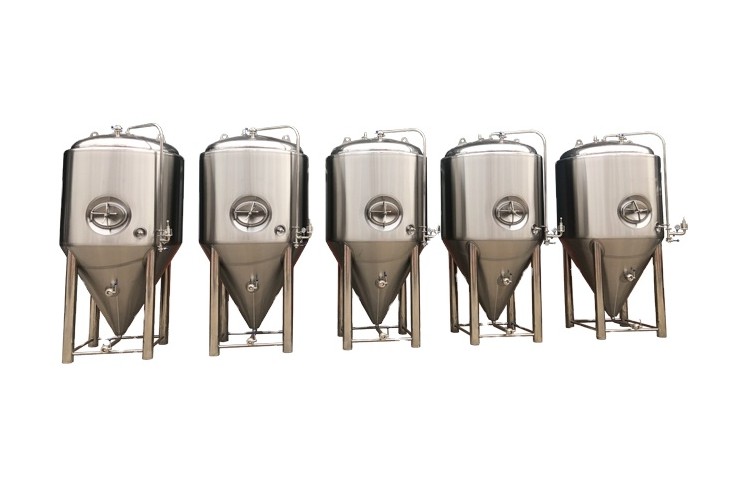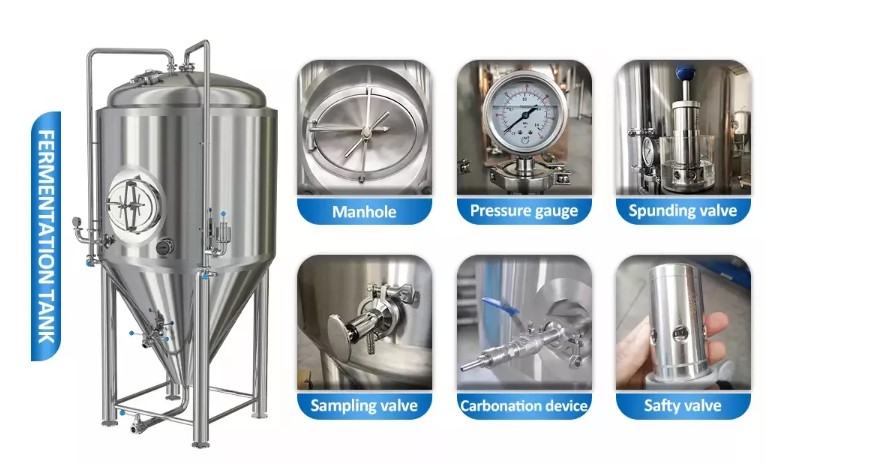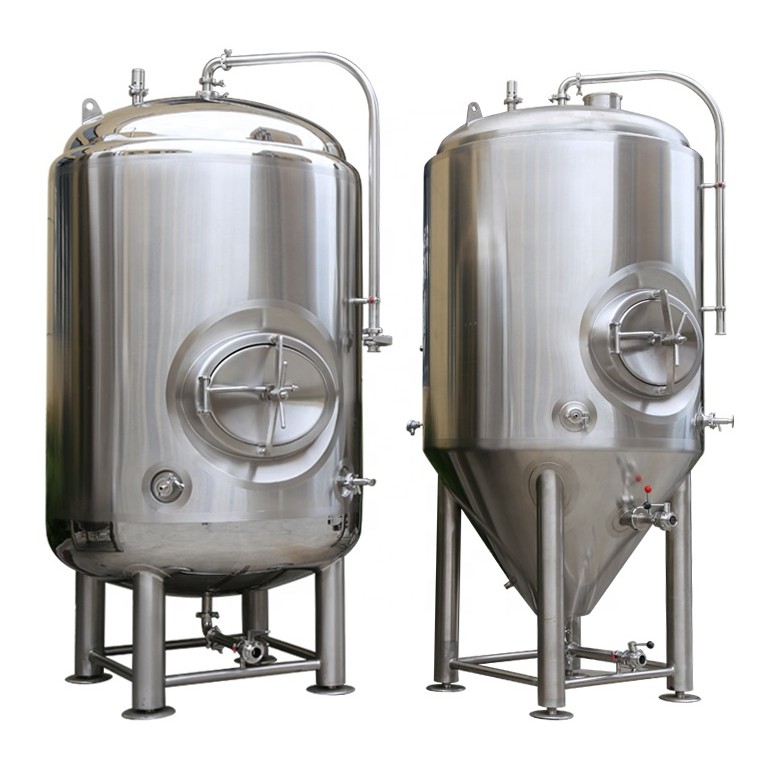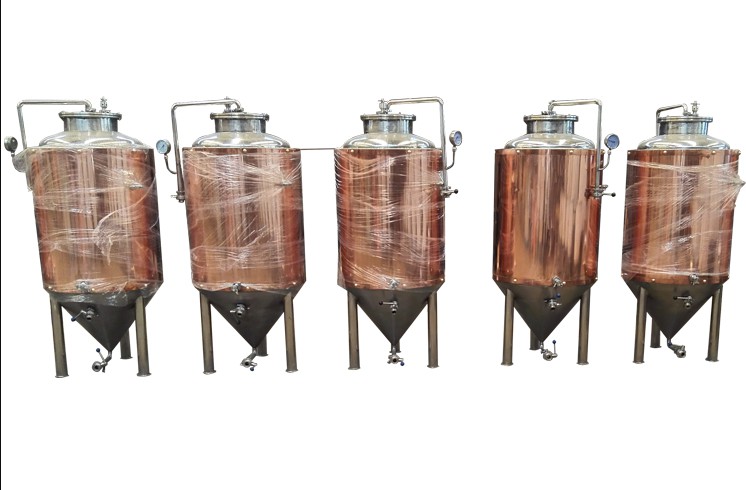Why You Need a Fermentation Tank
View:
A fermentation storage tank is a key tool for any industrial brewing operation. Fermentation is where the magic happens in beer brewing, and it is necessary to have a committed vessel for this procedure. Fermentation storage tanks are available in a range of sizes, and the dimensions you'll need will certainly rely on the range of your brewing operation. There are additionally a couple of different sorts of fermentation containers, so it is necessary to select the right one for your needs. Right here's a fast guide to help you select the best Beer fermentation tank for your organization.

What are fermentation containers?
Fermentation tanks are likewise called fermentation vessels, which keep wort and also ferment the wort right into beer. Also in the humblest home-based brewery, the fermentation tank is an essential part. Nearly any type of container that can hold fluid can end up being a prospective fermentor. Making use of different yeasts in the fermentor can ferment different products. Making use of brewer's yeast can ferment the wort right into beer. This is because, throughout the fermentation procedure of brewing beer, yeast converts to sugar right into alcohol. You can likewise transform biomass right into biogas in a fermentor. It is worth noting that a vital factor in the fermentation process is the amount of oxygen. If there is no oxygen (anaerobic problems), yeast will transform a lot more sugar right into alcohol. If there is a lot of oxygen, this will certainly first cause the yeast to increase. This is why fermentation requires to be carried out in a closed space (fermentation tank).

The Number Of Fermentation Tanks Do I Required?
How many fermentors are needed depends on the daily output of your brewery. If you do not have the ideal number of storage space systems, then a big mixture of home capacity is useless. The variety of storage units identifies the output of your brewery. The majority of craft beer takes 3-4 weeks to develop, so you require buying an appropriate variety of beer fermentation tanks according to your day-to-day outcome. If you still do not recognize how many fermentors you must buy, you can call We. We will certainly give you solutions based on your brew home capacity as well as the everyday outcome.
What Is The Distinction Between A Fermentor And Also A Unitank?

1. Growths continued during the late 1800s with upright round vessels, some with sloping or conical bottoms. In the 1960s, technological innovation advanced a brand-new principle-- main fermentation and maturation could be accomplished in the same vessel. Such containers are called" universal containers" or unitank.
It has been generally accepted in the brewing industry that cylindroconical containers have many benefits overall older container styles:
They cut the need to move beer while in process. Which is a substantial benefit to beer's high quality, process times, area use, as well as manufacturing economic situation.
2. Cleaning, sanitization, and microbiological control are also much more exceptional in cylindroconical storage tanks compared to older storage tank layouts.
3. They can be separated as well as affordably shielded.
4. The level of automation needed in bigger, modern-day breweries is much easier and also less expensive than with older storage tank styles.
5. Collection of CO2 during primary fermentation for regeneration (as well as reuse/sale) is easy in cylindroconical tanks, in contrast to the old open fermentors.
6. Cropping yeast is reliable, a lot more discerning, as well as much more hygienic in cylindroconical containers than in the older tank types.
Yet, the major distinction between unitank as well as modern-day fermentors is whether it has carbon rods. The unitank with carbon poles can ferment as well as mature beer. If you own an unitank, then you don't require getting an extra brilliant storage tank. Fermentation storage tanks without carbon rods can just ferment beer, so you require getting an ideal number of intense tanks.
Why Do Breweries Use Copper Storage Tanks?

Copper is an important metal in the building of breweries, but it is now generally replaced by stainless steel. Copper can be built to create thin sheets, which makes it simple to attach large brewing vessels to make leak-proof seals. Copper is also an excellent thermal conductivity material. In an age when direct home heating prevailed, copper was the metal of selection. A small amount of barrel is likewise a nutrient needed by yeast. Wort is weakly acidic, it can liquefy some copper barrels to keep the yeast healthy. In the fermentation process of beer, the role of copper is to reduce the concentration of hydrogen sulfide, which is a gas with the smell of rotten eggs.
Certainly, copper additionally has its shortcomings. It is a lot harder to tidy than stainless steel. Although copper is pliable, it is relatively soft and does not have the structural toughness of steel. Although the look of the brew house is constructed from copper cladding for aesthetic reasons, the interior of the container is mostly all stainless steel.
People, like yeast, require trace amounts of copper (1-2 mg each day in a healthy diet plan) to preserve regular cell features. In recent years, the poisoning of copper and also its impact on beer manufacturing has been the focus of attention. Whether this is a concern worthy of attention is still extremely controversial. The U.S. EPA restricts the copper material in drinking water to 1.3 mg/L. The high focus of copper is harmful to humans as well as lots of microorganisms, including yeast.
